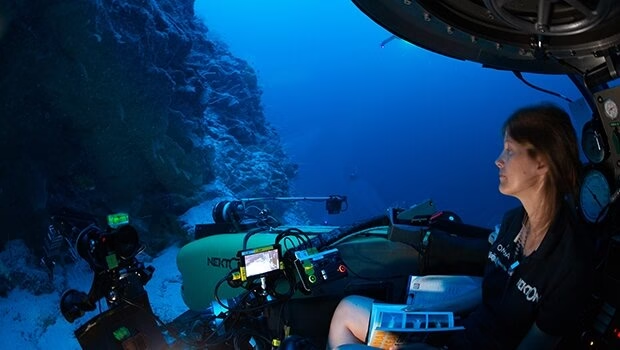
Exploring Deep Sea Exploration
The deep sea, Earth’s final frontier, remains one of the most enigmatic and least explored regions on our planet. Covering over 70% of the Earth’s surface, the ocean holds secrets that have fascinated scientists, adventurers, and storytellers for centuries. Yet, despite its vastness, less than 20% of the ocean floor has been mapped in detail. Deep sea exploration is not just about satisfying human curiosity—it’s a critical endeavor for understanding biodiversity, climate change, and even the origins of life. In this blog, we’ll dive into the fascinating world of deep sea exploration, its challenges, technological advancements, and why it matters for our future.
Why Explore the Deep Sea?
The deep sea—defined as depths below 200 meters (656 feet)—is a realm of perpetual darkness, crushing pressures, and extreme cold. So why invest time and resources into exploring such an inhospitable environment?
- Biodiversity Hotspots: The deep ocean is home to unique ecosystems, from bioluminescent creatures to hydrothermal vent communities. Scientists estimate millions of undiscovered species reside here, offering insights into evolution and adaptation.
- Climate Regulation: Oceans absorb 30% of human-produced CO₂ and 90% of excess heat from global warming. Understanding deep-sea currents and carbon storage mechanisms is vital for climate modeling.
- Medical Breakthroughs: Marine organisms have already contributed to life-saving drugs, such as cancer treatments derived from sea sponges. The deep sea’s extreme environments may harbor novel biochemical compounds.
- Resource Potential: Minerals like manganese nodules and rare-earth elements lie on the ocean floor, critical for renewable energy technologies. However, sustainable extraction remains a challenge.
A Brief History of Deep Sea Exploration
Humans have always been drawn to the ocean, but deep sea exploration began in earnest in the 19th century. Here’s a quick timeline:
- 1872–1876: The HMS Challenger expedition, the first global marine research voyage, discovered thousands of new species and mapped ocean basins.
- 1930: William Beebe and Otis Barton descended to 434 meters (1,423 feet) in the Bathysphere, offering the first glimpse of deep-sea life.
- 1960: Jacques Piccard and Don Walsh reached the Mariana Trench’s Challenger Deep (10,916 meters/35,814 feet) in the Trieste, a record unbroken for 52 years.
- 2012: James Cameron’s solo dive to Challenger Deep in the Deepsea Challenger reignited public interest.
- Today: Robotic submersibles like ROVs (Remotely Operated Vehicles) and AUVs (Autonomous Underwater Vehicles) dominate exploration, minimizing human risk.

Technology Powering Modern Exploration
Exploring the deep sea requires cutting-edge tools to withstand pressures exceeding 1,000 atmospheres (equivalent to 50 jumbo jets stacked on a person). Here’s a look at the tech making it possible:
1. Submersibles
- Manned Submersibles: Vehicles like Alvin (operational since 1964) allow scientists to personally observe ecosystems. Upgraded to reach 6,500 meters, it’s contributed to discoveries like the Titanic wreck and hydrothermal vents.
- Uncrewed Vehicles: ROVs like Jason and Nereus collect samples, film footage, and conduct experiments at depths unsafe for humans.
2. Sonar and Mapping Tools
Multibeam sonar systems create high-resolution 3D maps of the seafloor, revealing underwater mountains, trenches, and volcanic activity. Projects like the Seabed 2030 aim to map the entire ocean floor by 2030.
3. Advanced Sensors
Temperature, salinity, and chemical sensors provide real-time data on ocean conditions. DNA sampling tools (“eDNA”) help identify species without direct contact.
4. Deep-Sea Cameras and Lighting
Low-light cameras and LED arrays capture stunning imagery of bioluminescent organisms and geological formations.
Remarkable Discoveries from the Abyss
Deep sea exploration has reshaped our understanding of life and Earth’s processes:
- Hydrothermal Vents: Discovered in 1977, these “underwater geysers” host thriving ecosystems powered by chemosynthesis (not sunlight), challenging the notion that life requires photosynthesis.
- Extremophiles: Microbes thriving in boiling vents or freezing methane seeps hint at life’s potential on other planets.
- Shipwrecks and Archaeology: From the Titanic to ancient Roman ships, the deep sea preserves human history.
- Bioluminescence: Over 75% of deep-sea creatures produce light, used for communication, hunting, and camouflage.
Challenges and Ethical Considerations
Despite progress, deep sea exploration faces significant hurdles:
- Technical Limitations: Building pressure-resistant equipment is costly and time-consuming. Communication delays and limited battery life hinder missions.
- Environmental Risks: Mining and trawling threaten fragile ecosystems. Species like the yeti crab or dumbo octopus could vanish before being studied.
- Funding and Collaboration: Exploration relies on international partnerships and funding, which can be politically fraught.
Ethical questions also arise: Should we exploit deep-sea resources, or preserve them as scientific sanctuaries? Striking a balance between curiosity and conservation is crucial.
The Future of Deep Sea Exploration
The next decade promises groundbreaking advancements:
- AI and Machine Learning: AI-powered AUVs will analyze data on-the-fly, identifying species or hazards without human input.
- Citizen Science: Public-access platforms like NOAA’s livestreams engage global audiences in real-time discovery.
- Sustainable Practices: The UN’s 2023 High Seas Treaty aims to protect 30% of international waters by 2030, emphasizing eco-friendly research.
How Can You Get Involved?
You don’t need a submersible to contribute to ocean exploration:
- Support marine conservation organizations.
- Reduce plastic use to curb ocean pollution.
- Stay informed through documentaries (My Octopus Teacher, Blue Planet II) and citizen science projects.
Conclusion
Deep sea exploration is more than an adventure—it’s a necessity. By unraveling the ocean’s mysteries, we gain tools to combat climate change, discover medical marvels, and preserve ecosystems that have existed for millennia. As technology advances and global collaboration grows, we stand on the brink of a new era of discovery. The deep sea reminds us that our planet still has stories to tell, and it’s our responsibility to listen.






